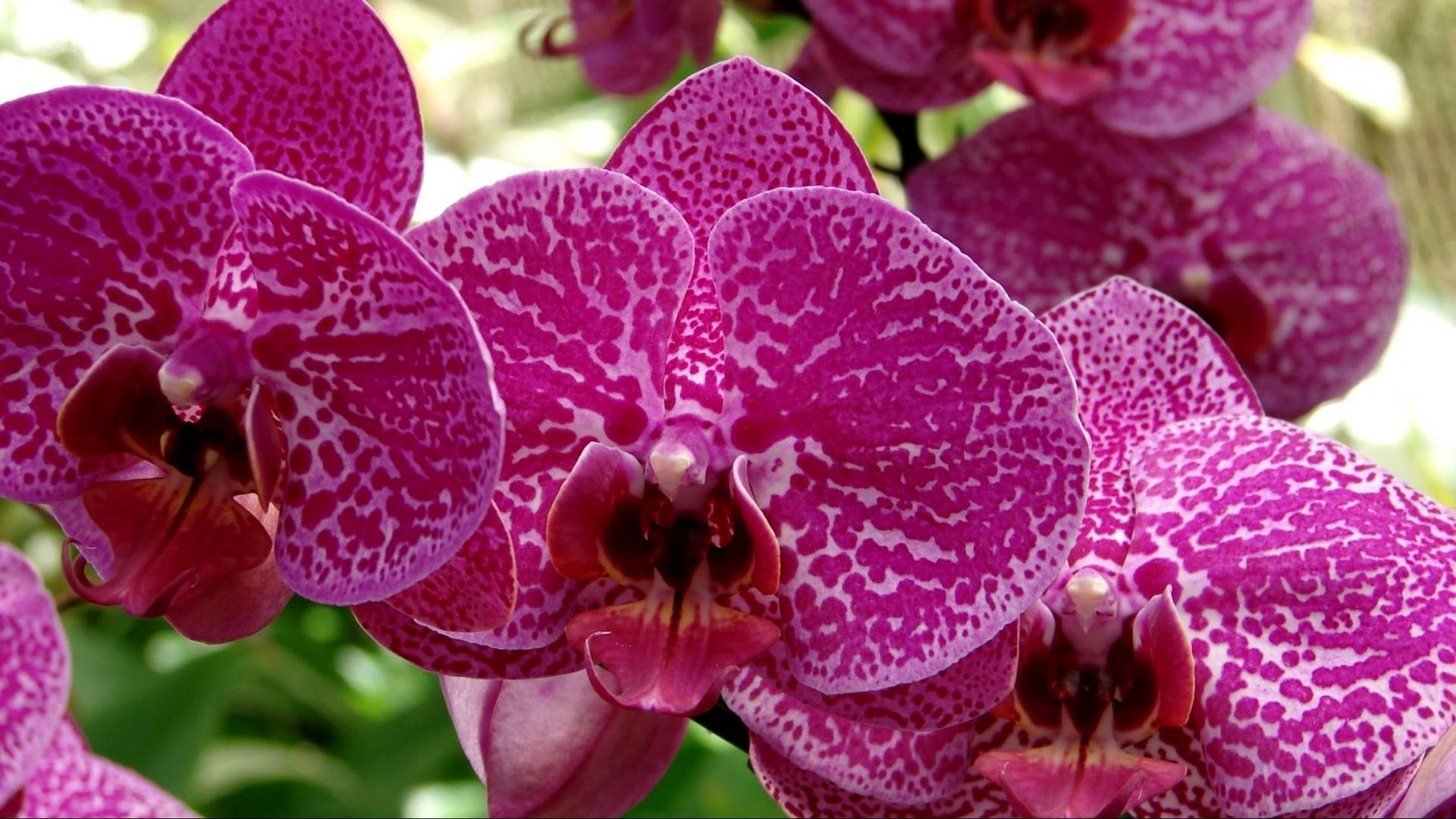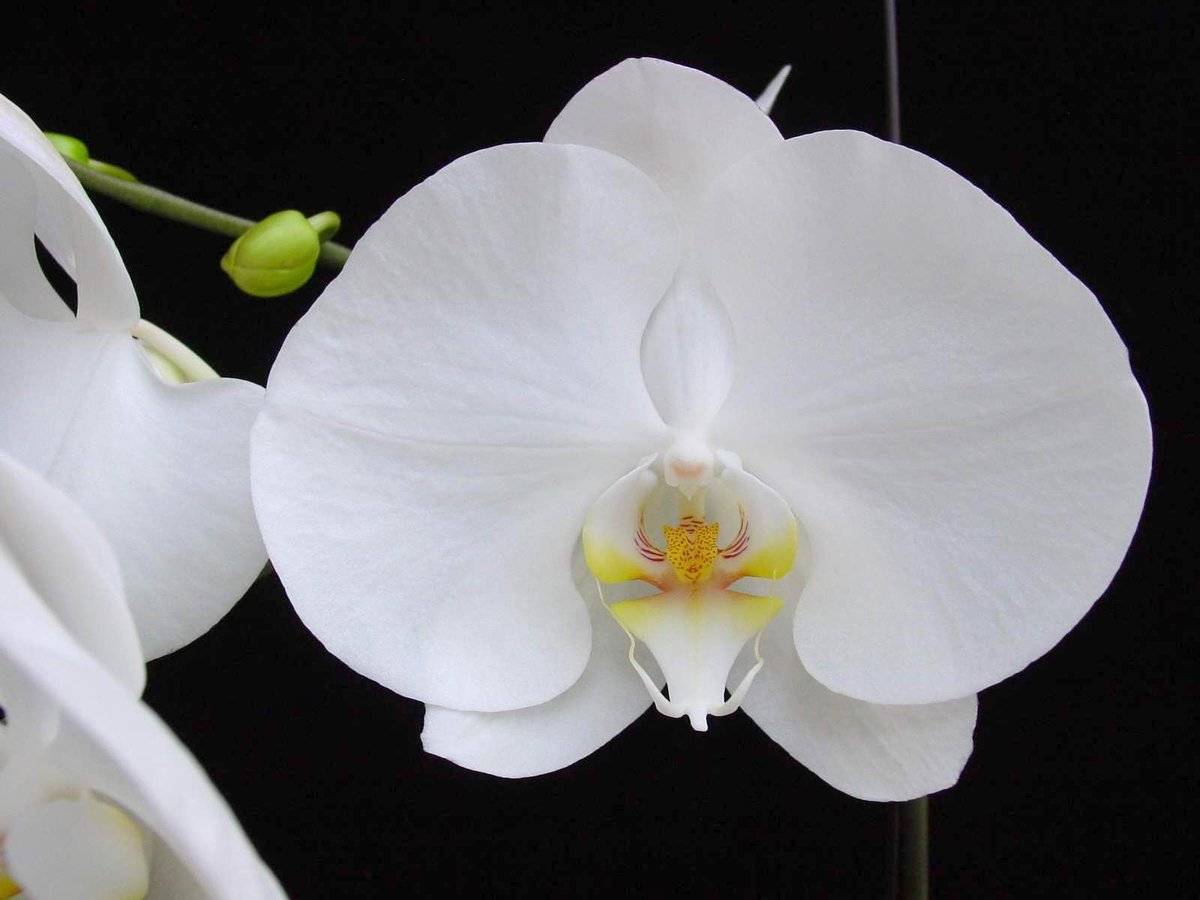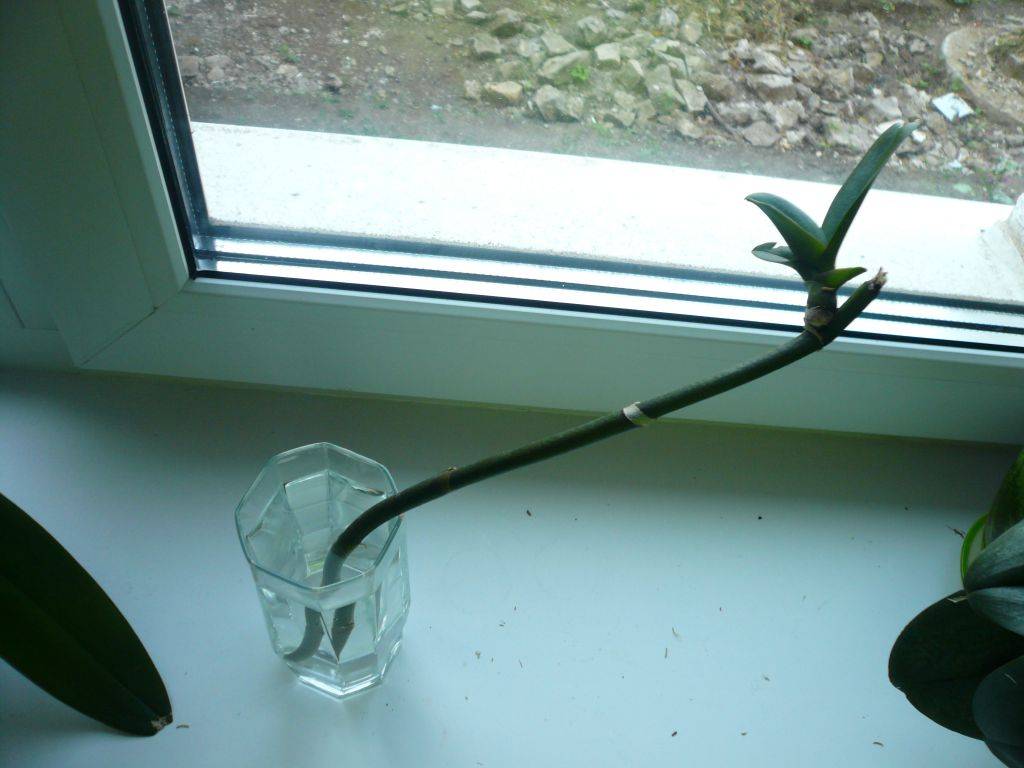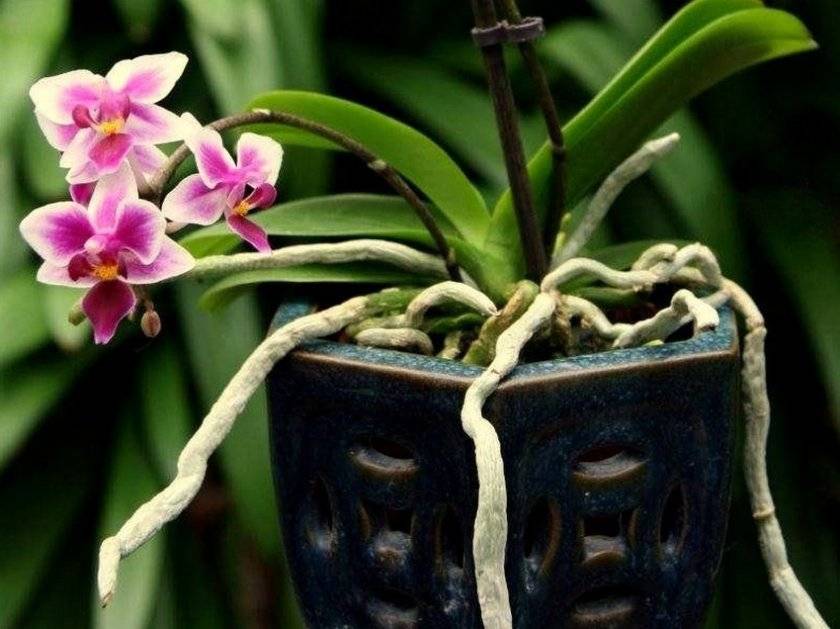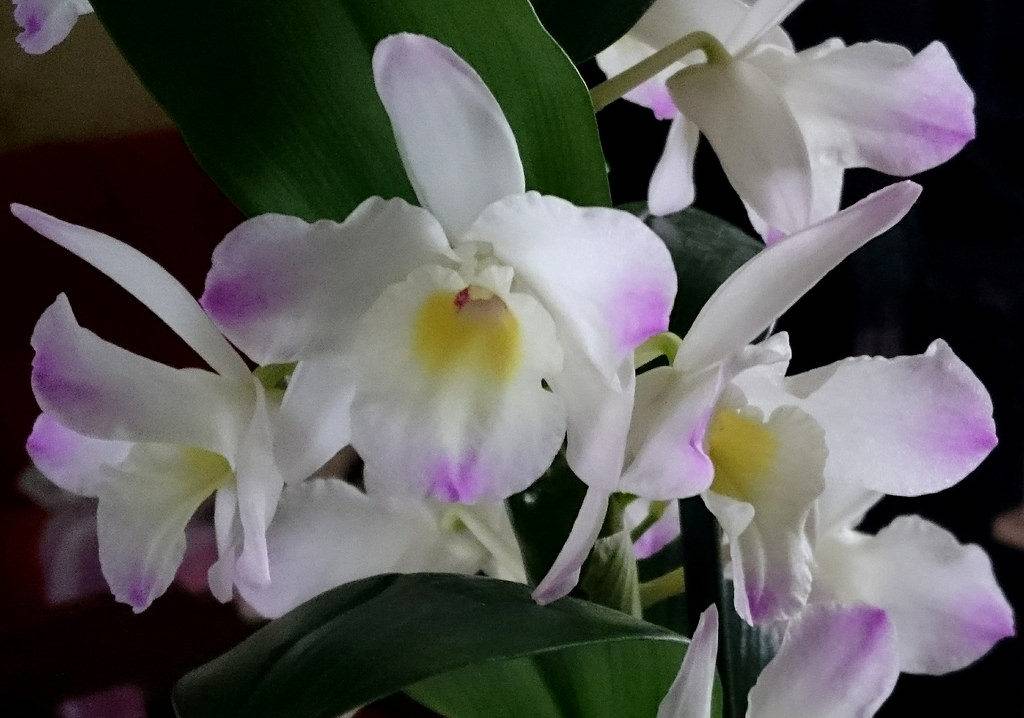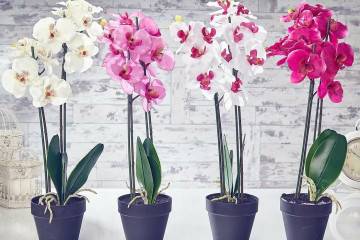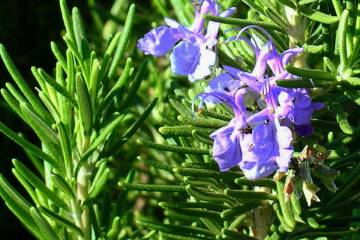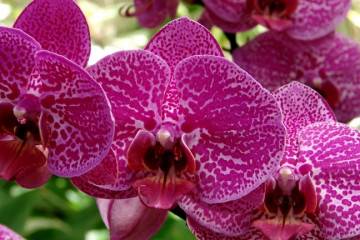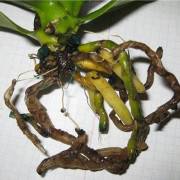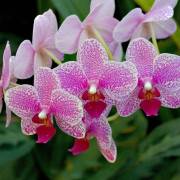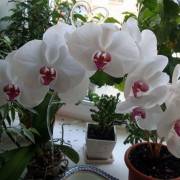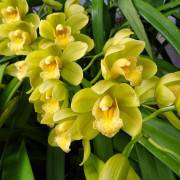How to propagate an orchid at home: with a peduncle and other options
Content:
The most popular and beautiful flower is the orchid, which are easy to care for and reproduce at home. There are the following ways to increase the number of plants: cuttings, babies, seeds, peduncles, air layers.
The need for orchid reproduction
Not everyone knows how an orchid reproduces, because they are not interested in this process. Usually, this flower is cultivated on an industrial scale. Orchid is a fairly popular flower that is given to women, they are decorated with bouquets and hairstyles, and used in decor.
But they are doing this not only on an industrial scale, since it is required to propagate orchids, taking care of the health of the flower. The plant has a peduncle, which from time to time forms children - this is a sign that the plant is ready for reproduction and requires it.
Best time to breed
Orchids can be propagated at home, for this there are several ways how you can plant flowers of this culture. It is recommended to carefully choose the time for reproduction, since it will not always be possible to successfully organize the division of the flower.
You can start the event no earlier than the orchid has faded. In this case, it is worth waiting a couple of months after flowering is complete. Then it will be possible to start transplanting a plant, since the flower at this time enters a period of vegetative dormancy.
It is necessary to monitor the condition of the plant. Only an adult, mature can be subjected to reproduction. Moreover, it must be healthy. The plant often decides for itself when it is time to reproduce, forming a baby on the peduncle.
Home options
Reproduction of orchids is not a difficult task, even for a novice grower. For many, it may seem that this tropical flower is too capricious, but in fact this is far from the case. You just need to know how to propagate an orchid at home correctly so that it pleases the eyes of others.
Cuttings
Cutting is available only to owners of monopodial type orchids. Reproduction takes place in the spring. To do this, you need to cut off the top of the plant so that several aerial roots remain on it. The cut needs to be sprinkled with charcoal, treated with garden varnish and fungicide, so that later it would be easier to root.
If the stalk is strong enough, then additional care is not required. It should be planted in an individual pot that suits him in size. Then place in a greenhouse with moist air. In greenhouse conditions, it is worth placing the flower from which the stalk was cut.
Cuttings need to be cut into 12 cm each, and they must have at least two dormant buds. After processing, they should be laid horizontally on well-moistened soil and create a greenhouse effect using film, plastic or glass. It is required to carefully monitor the temperature in the greenhouse, it should not be lower than 29 ° C.
Every day or every other day, it is required to water the soil, airing the plants. Do not allow condensation to settle inside. It is also recommended to fertilize with fertilizers every 2 weeks. Thus, it is required to care for the cuttings until roots are formed from their buds with a length of 5 cm. After that, the cuttings can be separated and rooted, planting in the soil.
Peduncle
A monopoidal orchid can be propagated using a peduncle. At home, you must first wait until the plant has completely bloomed. After that, it is required to cut off the shoot at the base and divide it into cuttings, so that each has a node with a bud. All collected material should be treated with a fungicide, and then spread on wet moss so that the kidney is not immersed in the substrate.
After that, it is required to place a container with cuttings under a film or glass and leave at room temperature until the nodes form a socket with a root system. All this time, it is required to regularly spray the cuttings, preventing the formation of mold and rotting on them.
Children
Children are called the buds of the roots, peduncles or stems from which sprouts appear. During germination, roots form in them, so it is not recommended to cut them off immediately. It is possible to plant in individual pots only when the root system is growing. This may take 5 to 8 months. This method can be used to propagate, for example, dendrobium and phalaenopsis, rather small orchid species.
For planting from children, you need to choose those who have from 4 leaves and from 5 roots, the length of which reaches 5 cm. Cutting off the sprout is required after its roots have reached the required length. Cutting sites need to be processed both on the mother and on the daughter offshoot, sprinkled with charcoal or activated carbon. You can plant the children after 2 hours in a moist soil.
Seeds
The longest running method of breeding orchids is from seed. To get an adult blooming flower, you will have to wait up to 5 years. At home, growing an orchid from seed is a difficult experience.
It is required to sprinkle the seeds in a thin layer on wet ground. For their germination, it is required to create a greenhouse effect so that the seeds are in a microclimate with constant air humidity and temperature conditions. Instead of watering, spraying with warm water is used. After the appearance of the first shoots of the plant, it is required to dive. The second pick is made in the phase of the second leaf, the third - in the phase of the fourth. The seedlings can then be transplanted into individual pots and cared for in the usual way.
Air roots
Many gardeners are unaware of the structure of the orchid. Aerial roots play an important role in plant development. They support the ground part of the flower, receive moisture and sunlight from the air to start the process of photosynthesis.
If there are no such roots, then it is safe to say that the orchid does not receive additional sunlight or moisture. Also, an incorrectly selected substrate can have a negative impact. If there are a lot of roots, then this may indicate that the water balance of the orchid is disturbed. It should be watered less, otherwise the plant may die.
In late spring or summer, as soon as the flower has stopped flowering, it is required to scratch the film next to the bud with a needle. In this case, you should not deepen inside the peduncle, you should only disrupt the epithelium. It is worth applying a paste to this area and waiting for the roots to develop up to 3 cm, and the number of sheets will be at least two. After that, it is required to separate the sprout from the mother bush and plant it in a suitable substrate.
Further care of the flower at home
If the reproduction of the orchid was successful, then you should pay special attention to caring for the plant. This requires adjusting the air temperature, humidity, and the composition of the substrate used. Top dressing plays a significant role. It is not necessary to do this before the first flowering of the plant, since the soil contains a sufficient amount of nutrients.
Watering and feeding
Watering is the key to taking care of the shoots. The moisture content of the soil should be properly assessed. It should not be overmoistened, because in this case the roots may begin to rot. After transplanting the seedlings, they must be thoroughly sprayed, the next watering will be needed only after a few days, when the pot is light enough and the substrate is dry. Watering should be done in the same way as for adult plants, submerging the pots in water.
Since top dressing is not required in the first 2-3 years, special attention must be paid to the substrate and the pot. It must be suitable for the size of the root system. There should be drainage holes at the bottom of the pot so that moisture does not stagnate there.
The substrate should be made from sphagnum, charcoal and crushed pine bark. To populate the substrate with a favorable microflora and prevent it from drying out, it is worth adding a small amount of high-moor peat to it.
If the roots begin to knock upward from the pot, there is no need to cut them off or try to submerge them back into the soil. It is recommended to spray them with water from time to time or cover them with moss to avoid drying out.
Humidity and temperature
The optimum air temperature should be between 18 ° C and 30 ° C during the daytime, and at night it should not drop below 16 ° C. Moisture is important for a plant when it comes to sprouts. They are required to be kept in a greenhouse with high humidity. Young and adult plants love moisture, so it is required that the substrate is always moist.
Lighting
Sunlight plays an important role in the development of any plant. The orchid is a light-loving flower, but this does not mean that the pot with the plant should be left in direct sunlight.If the flower will not receive enough light, it is better to use a fluorescent lamp.
Breeding flowers always requires a lot of time and effort, which a florist takes to grow new specimens. Reproduction of orchids is not an easy job, which is paid in full by beautiful flowering, you just need to choose a convenient breeding method.
